Our question is, “What is ISO in photography.” Basically, it is a measurement system that standardizes how “sensitive” your camera film or digital sensor is to light. This helps create uniformity across photography brands and cameras.
Along with aperture and shutter speed, ISO lets photographers achieve the perfect camera exposure. Continue reading to learn what ISO is and how to use it to perfect your photos. We provide five examples of why ISO is so important when taking photos.
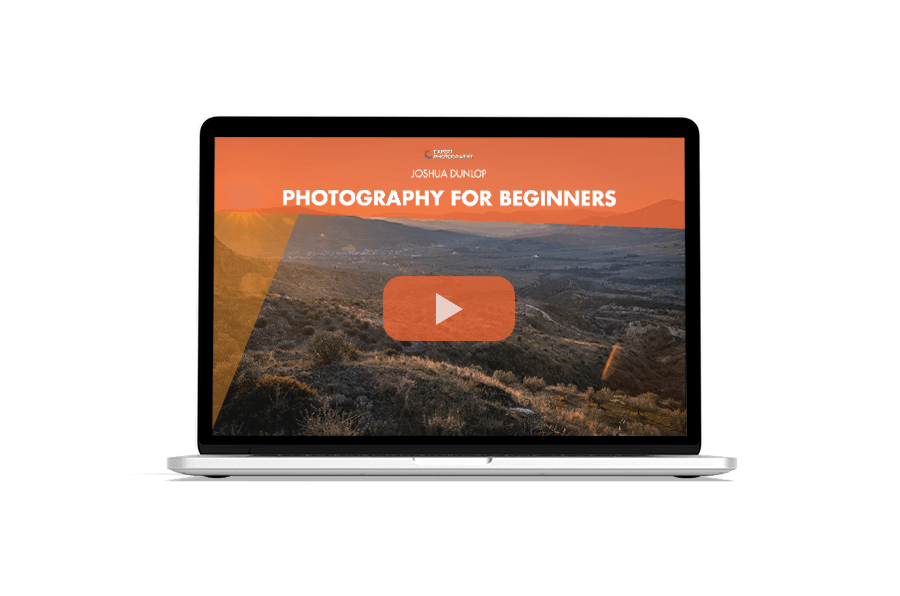
ISO is an important photography setting that determines how bright your image is. It’s helpful because it gives photographers an extra camera setting to manipulate their exposures.
As mentioned, ISO is one of three elements in the exposure triangle in photography (see image below). ISO is one of the key settings photographers use to get the perfect exposure—along with aperture and shutter speed.
It gets its name from the International Standard for Organization (ISO), which set the ISO standard in 1988. The ISO is a worldwide group of national organizations. It makes various rules and guidelines for different industries and businesses globally.
ISO works differently in film and digital cameras. In the first part of our article, we discuss ISO in digital cameras. But at the end, we also briefly examine ISO in film photography.
Unlike shutter speed and aperture, ISO doesn’t change how much light comes into the camera. Rather, it determines how the camera deals with the light the sensor receives.
Essentially, the ISO determines how sensitive the sensor is to light. A lower ISO means the sensor is less sensitive. And a higher ISO setting makes the sensor more sensitive.
But it isn’t as simple as saying a high ISO setting is better than a lower ISO. There are positives and negatives to either setting. Plus, different situations call for different ISO settings.
We go into more detail in the sections below. Keep reading to learn everything you need to know about ISO.
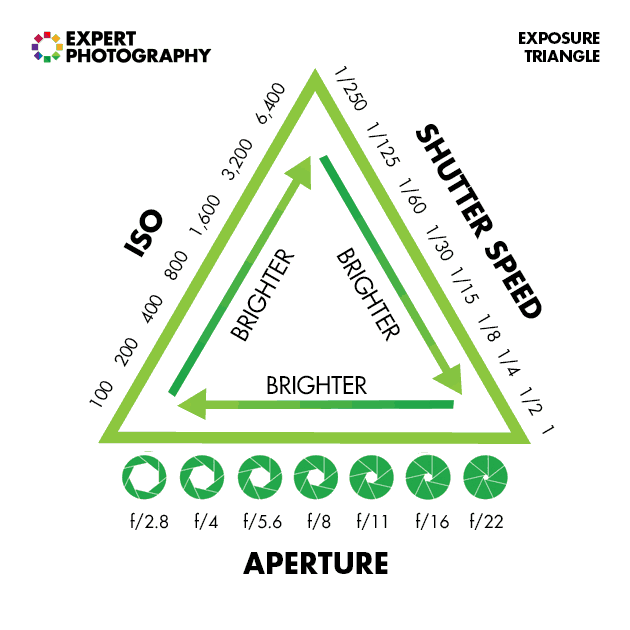
In the days of analog photography, the ISO determined how sensitive the film was to light. Camera film uses an emulsion that reacts when it’s exposed to light. This chemical reaction gives you your image.
But the emulsion’s chemical construction can be diluted to make it more light-sensitive. This means you need less light to get a fully exposed image. Films with different strength emulsions are given different ISO numbers to differentiate them.
Unlike in film photography, you can change the ISO setting of your digital camera with the click of a button. You can make the sensor more or less light-sensitive depending on your needs.
That means you have more freedom when choosing your exposure settings. You have control over the shutter speed and aperture. But you can also change the ISO setting to give yourself more exposure control. This lets you adapt to different settings and lighting conditions.
The basic art of photography is a balancing act. To create a perfectly exposed image, you must balance shutter speed, aperture, and ISO. Of course, there’s plenty of creative freedom within that framework. But you need to understand ISO to give yourself the power to create stunning images.
We measure ISO in exposure value (EV) stops, usually called “stops.” Each ISO stop is given a numerical value. Thankfully, all camera brands use the same measurement system for ISO.
The low ISO setting is 100, the medium ISO setting is 400, and the high ISO setting is 1,600.
When you change the ISO setting, the sensitivity increases or decreases by 100%. That means it doubles when you change to a higher setting. And it halves when you change it to a lower setting.
If your camera is set to 400 ISO and you increase the ISO, the next stop is 800. If you want a lower setting, the next stop is 200. This progression happens in both directions. But there are limits to how high you can go. And that limit varies from camera to camera.
Generally, we can use ISO settings from 100 up to ISO 6,400 or even 25,600. This means you have 6 to 8 stops of extra exposure control. This gives you more freedom to adapt to the lighting conditions of your environment.
When setting the ISO, most cameras offer more precise settings than full stops only. You’ll likely find that all exposure parameters are variable in third-stop increments.
A series of ISO values in third-stops from 100 to 400 looks like this—100 to 125 to 160 to 200 to 250 to 320 to 400.
We demonstrate ISO using a photo in the GIF below. The photos are displayed in the following order—ISO 100, 200, 400, 800, 1,600, and 3,200. The aperture and shutter speed remain constant. Only the ISO changes so you can see its effect on the photo.
The fourth photo, taken at ISO 800, shows the ideal exposure. Nothing affects the exposure in one way. Using different ISO values has different consequences.
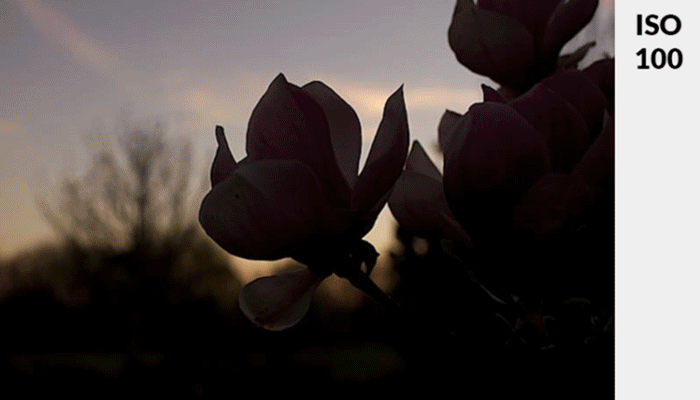
Higher ISO settings make the camera’s sensor more sensitive to light. But that extra sensitivity comes at a cost. And that cost is image quality. This is true in both digital and film photography.
A low ISO gives you less light sensitivity but better image quality. In contrast, a high ISO setting gives you more light sensitivity but less image quality.
At higher ISO settings, you are more likely to experience digital noise. Similar to grain in film photography, digital noise degrades image quality. It gives the image a pixelated or grainy quality. It causes the image to lose sharpness, intensity, and richness of color.
The lower the ISO, the better the image quality. Lower ISOs give you deep and rich colors. You also get immaculate details, better clarity, and improved sharpness.
The problem is you need more light when using lower ISO settings. It’s best if you compensate with wider apertures and slower shutter speeds. But changing these settings also has consequences. (Read our articles on shutter speed and aperture for more.)
Sometimes, there isn’t enough light to keep your ISO low. Even when you compensate with shutter speed and aperture, you must increase the ISO.
This is why photography is such a balancing act. When you change one exposure setting, it affects the other settings. That’s why understanding ISO is so important when taking pictures.
To best show how ISO affects image quality, I took another series of photos and displayed them below.
I adjusted each photo’s shutter speed and aperture for this experiment to compensate for the exposure changes. This makes it easier to compare the difference in image quality.
The photos have ISO settings in the following order—100, 200, 400, 800, 1,600, and 3,200.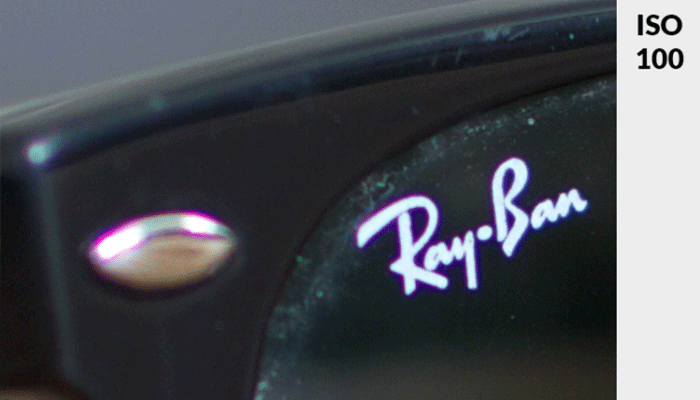
As you can see, the amount of noise in the photo increases as the ISO number increases. For this reason, I advise keeping your ISO levels as low as possible, as long as they don’t impact the image in other ways.
For example, if you need a slow shutter speed to intentionally use motion blur in the image, it’s better to use a higher ISO. Reducing noise is possible in editing software and in-camera to some extent. Correcting motion blur, on the other hand, is nearly impossible.
So, let’s talk about noise reduction for a minute. There are many kinds of noise reduction software out there. These algorithms are also built into popular post-production tools like Adobe Lightroom. But this only “smooths out” the noise.
Excessive noise reduction can result in an airbrushed effect on faces. It reduces the detail and sharpness in a photo, as shown below. (I cropped it to show the effect more clearly). Noise reduction has its uses. But it’s best done in moderation and very specific instances.
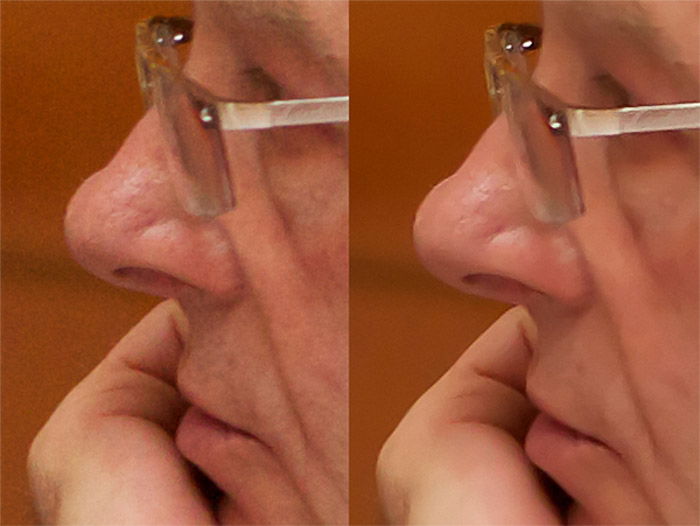
Basically, you should use low ISO in bright environments and higher ISO in darker environments. Our graphic below shows how to use ISO properly in most situations.
Besides your environment, you must account for your other two exposure settings and set ISO accordingly. We’ll show you five real-life examples of properly using ISO.

Here, we’re using a 28-70mm lens at 28mm to get a wide field of view in bright daylight.
For casual street and travel shots, we want to freeze people’s motion and avoid camera shake. This requires us to set a shutter speed of 1/250 s (seconds) or faster. We also set an aperture of f/5.6 because we want most of our image in focus.
In this case, it’s best to use ISO 100. Even with a low ISO, you might overexpose the image. To compensate for this overexposure, use a faster shutter speed.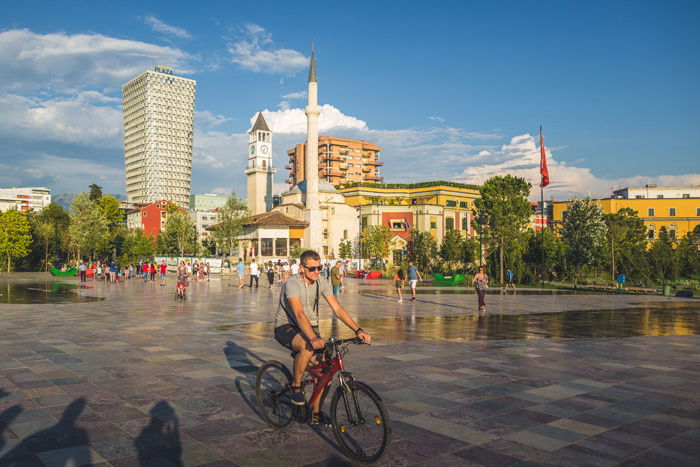
In this example, we have a moderately lit room during the afternoon. Some natural light leaks through the windows, but not nearly as much as in the previous scenario.
We’re using the same lens, but this time at 50mm to get a clean shot of two family members. We open our aperture to f/4 because we want both in focus but with a bokeh background.
We can slightly reduce our shutter speed because we can hold your camera steadily. Our subjects are posing, and their movements are much more subtle. So, we’re fine with a shutter speed of 1/125 s.
This situation requires raising our ISO to between 400 and 800. Because we’re using a specific shutter speed and aperture for this shot, ISO is the setting we adjust to get the perfect exposure.
This is a mosh pit of an outdoor concert. The musicians are well-lit, but they’re moving quickly. We use a longer lens—85mm at f/2—to separate the subject and get a clean image. We’re limited to 1/400 s in shutter speed because we don’t want motion blur.
The lights change quickly in intensity. We shoot when the performer we want to capture is brightly lit and the background is dark.
To get the correct exposure, we must choose a high ISO setting between 1,600 and 4,000. There will be plenty of noise in the background, but our subject is exposed correctly.
In this scenario, we take an adventure to capture some wild birds. We grab our 100-400mm lens, which isn’t fast but reaches far. It’s a cloudy day. There is plenty of light, but not as much as direct sunlight. We like this better because animals look great in soft, diffused light.
We need a very fast shutter speed to freeze the motion of a bird taking off close up. We want at least 1/1000 s, but it can be as quick as 1/4000 s. Here, we choose the easier option of 1/1000 s.
Our lens’s f/5.6 aperture on the zoomed-in end limits us. In this instance, we need to use a higher ISO setting of 800 to 1,600— even outdoors in the daytime.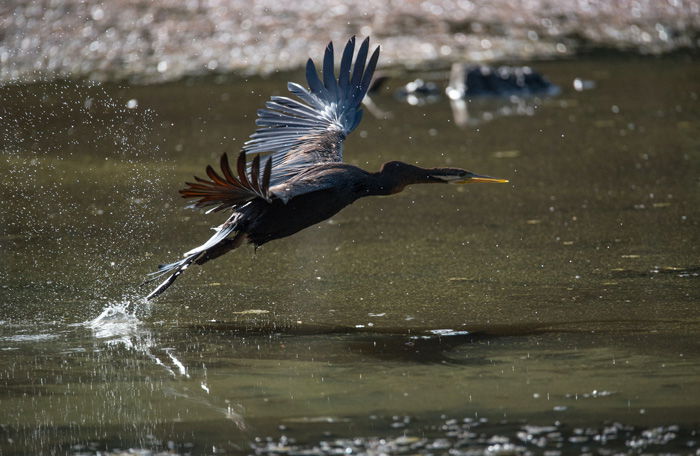
We’re in a field surrounded by beautiful mountains. We want to capture it right at dusk, in the last light of the day.
The light is dim, but fortunately, we have a tripod. This means we can use almost any shutter speed we want. In this shot, shutter speed is our main variable. Our aperture is locked at f/16 to keep the whole scene in focus.
Your ISO is fixed at 100 because you want the highest quality and detail. Landscape images are more likely to be enlarged before printing. So this is more important than in the case of a sports or concert shoot, for example.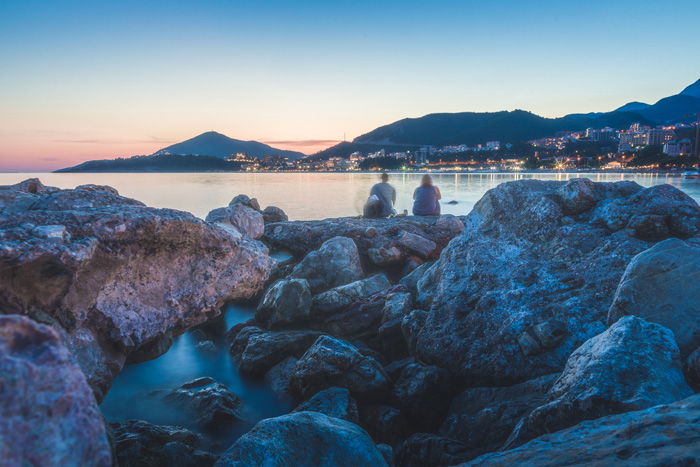
In this section, we answer the most frequently asked questions about ISO. We hope this makes it easier for you to understand and use ISO in your photography.
To change ISO, you must set your camera to Manual mode (M) or semi-automatic modes like Shutter Priority (S or Tv), Aperture Priority (A or Av), and Program mode (P).
Depending on the make and model of your camera, there are different ways of adjusting ISO. Professional and prosumer cameras always have a separate ISO button. This is because we must access it quickly in a fast-paced professional environment.
It’s usually hidden in a menu on entry-level DSLR and mirrorless cameras. Or it might be accessible by pressing two buttons (or dial and a button) simultaneously.
It’s also in the menus of compact cameras that offer manual control. If your camera doesn’t offer manual control, it automatically sets the ISO.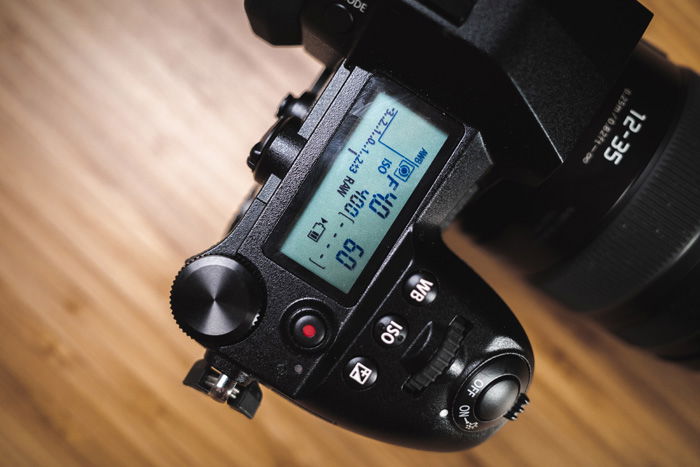
It’s time to get slightly more technical. What does ISO mean in a digital camera? Most photographers will tell you that ISO refers to the image sensor’s sensitivity.
This explanation is great for simplified illustration but is not the full story. This is the case if you shoot film but not digital.
ISO behaves just as if it changes sensor sensitivity. The higher (and more sensitive) it is, the brighter the photo. The more voltage you send into the sensor, the more sensitive it becomes. Sounds plausible, right? It’s not.
Rather, ISO determines signal amplification after the shot has been taken. This amplification can be analog, digital, or both simultaneously.
In ISO-variant cameras, full-stop ISOs are always amplified in an analog way. Third stops are differentiated with digital gain. But because the circuitry isn’t optimized for a set gain level, these sensors generally provide a narrower dynamic range.
ISO-invariant cameras make up the majority of modern mirrorless and DSLR devices. This includes almost all Nikon, Sony, and Fujifilm cameras. These work slightly differently.
The base ISO (80 or 100 on most cameras) applies some analog gain but no digital. Thus, the image is as clean as possible when it comes to noise.
At any step above base ISO, digital amplification is added, but not analog. This raises the noise floor, resulting in more visible noise. ISO-invariant camera systems are optimized for a set level of analog amplification. They perform slightly better in dynamic range and low-light noise.
Some modern digital cameras are built with a dual native ISO feature. This essentially means that such cameras have two base ISOs, which has advantages. In most cases, these are 100 and 800.
If you shoot at any value below 800, you get a low-level analog amplification and additional digital gain above 100. After you reach 800, another level of analog gain kicks in, removing the need for lower-quality digital gain.
The noise floor is lowered again. As you go above 800, digital amplification is added back again, but only up from 800. Thus, the image quality is better at 800 than 640 or even ISO 400. This technology is a significant improvement in low-light performance.
Cameras with this feature are quite rare today and are mainly video cameras. Most recently, we’ve seen dual native ISO on the Panasonic S1H, the Panasonic GH5S, and the Fujifilm GFX100 cameras.
Most photographers assume that any given ISO value, like 200, represents a fixed level of amplification in all cameras. This is not true.
To understand why, you must learn how different sensor sizes influence exposure and other properties. We have gone over this extensively in our article explaining equivalence.
Even though we have three variables for exposure, only one is an absolute value—shutter speed. Shutter speed is always the same and has the same effect, no matter the camera.
Aperture is a tougher question. When we talk about f-stops, we mean relative aperture. The f-stop indicates the amount of light that falls on a specifically sized sensor at a set distance from the lens. So, it’s usable to determine exposure within a given system.
But it’s less helpful when comparing and standardizing exposure between different-sized sensors. As I mentioned, smaller sensors get less light when using lenses with the same f-stop in proportion to their surface area.
The point of ISO is to standardize exposures between systems. An exposure of, say, ISO 100, f/4, and 1/100 s must look identical in every camera in terms of luminance. Consequently, ISO values mean higher amplification levels in cameras with smaller sensors.
Higher-resolution cameras need higher amplification than lower-resolution ones of the same size. Thus, pixel-level noise is generally more noticeable in high-resolution and small-sensor cameras.
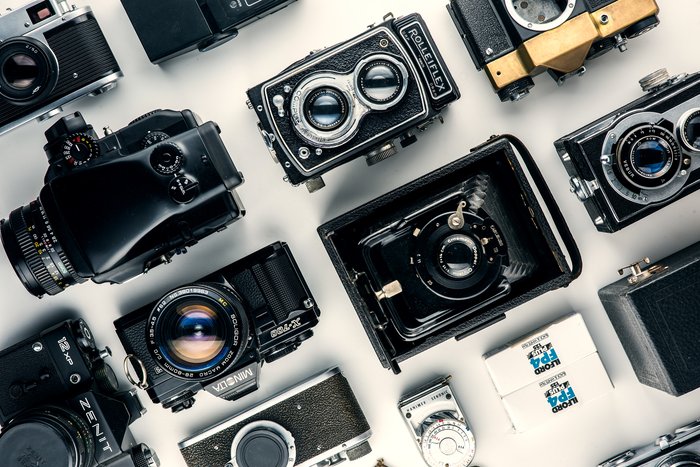
ISO noise and dynamic performance are not the same across all cameras. There are huge differences depending on age, sensor size, type of camera, and sensor technology.
Let’s start with age. ISO performance is one of the ever-evolving features of digital cameras. Each new generation of cameras has lower noise levels, higher dynamic range, and better low-light performance.
Because of software and sensor developments, new cameras give you far more stops than their precursors a decade ago.
Sensor size is equally important in low-light situations. Smaller sensors receive less light (with everything else staying constant). So, their ISO noise levels are also higher.
A full-frame camera from the same generation usually performs 1 to 1.5 stops better than an APS-C crop sensor model. And it is 0.5 to 1 stop better than a camera with a Micro Four Thirds sensor.
Today’s modern full-frame cameras give very usable images up to ISO 25,600.
The type or price of the camera is also a determining factor, although not as much as the prior two. A low-tier model, like a Canon EOS Rebel T8i (850D) DSLR camera, won’t perform as well as a Canon EOS R7 mirrorless camera.
They’re from the same generation and have identical sensor sizes. But more money tends to buy more sophisticated technology.
As I mentioned, the “sensitivity” explanation originates from film photography. When shooting with a film camera, you don’t set your ISO with the press of a button.
Instead, each type of film has an ISO rating related to its light-sensitive emulsion layer. This rating is also called film speed. The ISO of each film roll is fixed. You can’t change it.
Depending on what you shoot, you choose a film that matches your sensitivity needs. For daylight, you use ISO 100 or 200 film. You generally use ISO 400 film for indoor shoots, and so on.
When you load a roll of film into your camera, remember to change the ISO setting. This tells the light meter the ISO of the film, which can guide you more accurately. It also helps you remember what film you have in the camera.
Both film and digital photography have increased noise levels at higher ISO settings. But film noise or grain is generally considered pleasing—and I agree.
While digital noise can lower the quality of your image, film grain adds a texture that many photography fans love. The film aesthetic is something people are trying to recreate digitally these days.
Experimenting with different film speeds is part of the fun of film photography. There are so many film stocks to try, both in color and black and white.
If you’re interested in film photography, check out our list of the best color film stocks. If you want to go monochrome, here’s our article on the best black-and-white film.
When you step away from your camera and load the image onto your computer, you can’t raise the ISO. Editing software like Adobe Lightroom only lets you interpret the digital data already there.
The exposure slider increases in points. A +1 stop looks as if you collected one more stop of light. It has a similar effect in overall tones as raising your ISO from 100 to 200 would have.
Lightroom can only deal with digital data. So, tweaking exposure generally has noisier results than correctly exposing your shot in the first place. Always aim to get the correct exposure during the shoot.
An exception is ISO-invariant cameras. With RAW files from these cameras, you’re much less limited when setting exposure after the fact. If you’re using uncompressed files, your image almost behaves like you were changing ISO—without much more noise!
But you’re still better off setting the ISO correctly because that makes previewing your images easier. Also, you risk building a bad habit of forgetting correct exposure, which is detrimental to your photography in the long run.
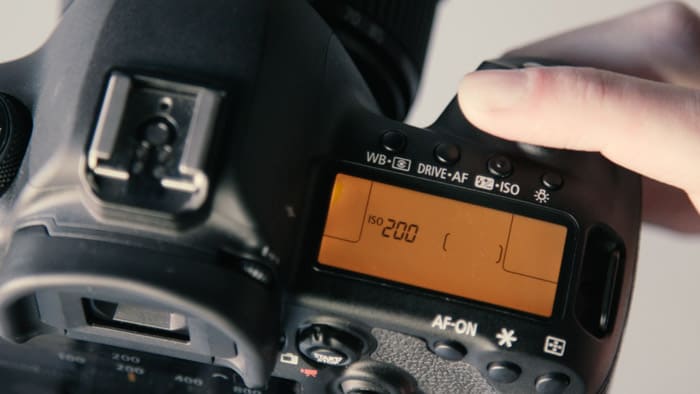
The International Organization for Standards (ISO) is an international body. It comprises representatives from various national standards organizations. It was formed in 1947 and has its headquarters in Geneva, Switzerland.
Since photographic emulsion was developed, different countries have tried enforcing ISO standards. This is so photographers knew what sensitivity they could expect from the film.
Multiple companies and institutions tried to devise a method to classify their film in the most straightforward way. This was the early process of working out what we now call “film speed.”
Numerous standards have been developed before settling at what we know today as ISO in photography. These are the most notable:
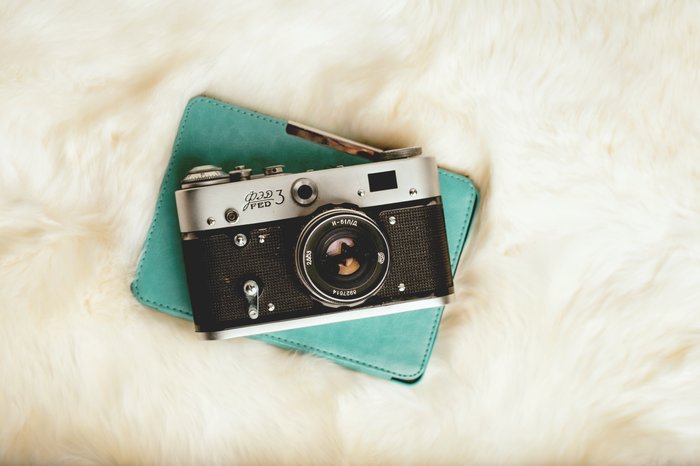
We hope this article has helped you answer the question, “What is ISO in photography,” and better understand ISO in your camera.
ISO in digital photography refers to the sensitivity of your camera’s sensor to light. A higher ISO means greater sensitivity for brighter photos in low-light conditions. But this potentially introduces more digital noise. A low ISO helps retain quality and detail in your photography.
We recommend practicing manual control of your camera as much as possible. We promise that being able to instinctively adjust all the basic exposure settings will open up new ways to shoot! Your photography takes off once you no longer have to consider all the basics.
Don’t miss out on our Quick Capture Cheat Sheets for photography facts on the go! Or check out our beginner eBooks and courses to learn how to best use ISO in your photography.
